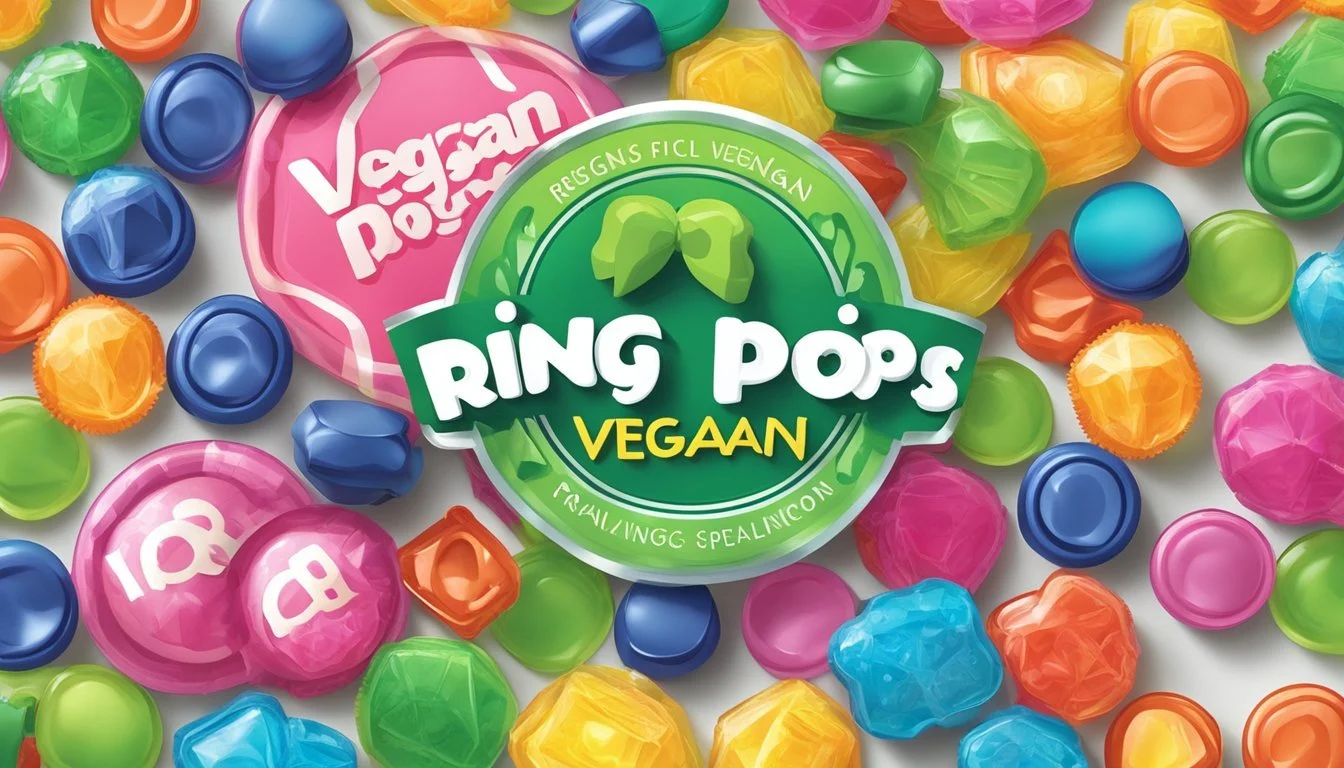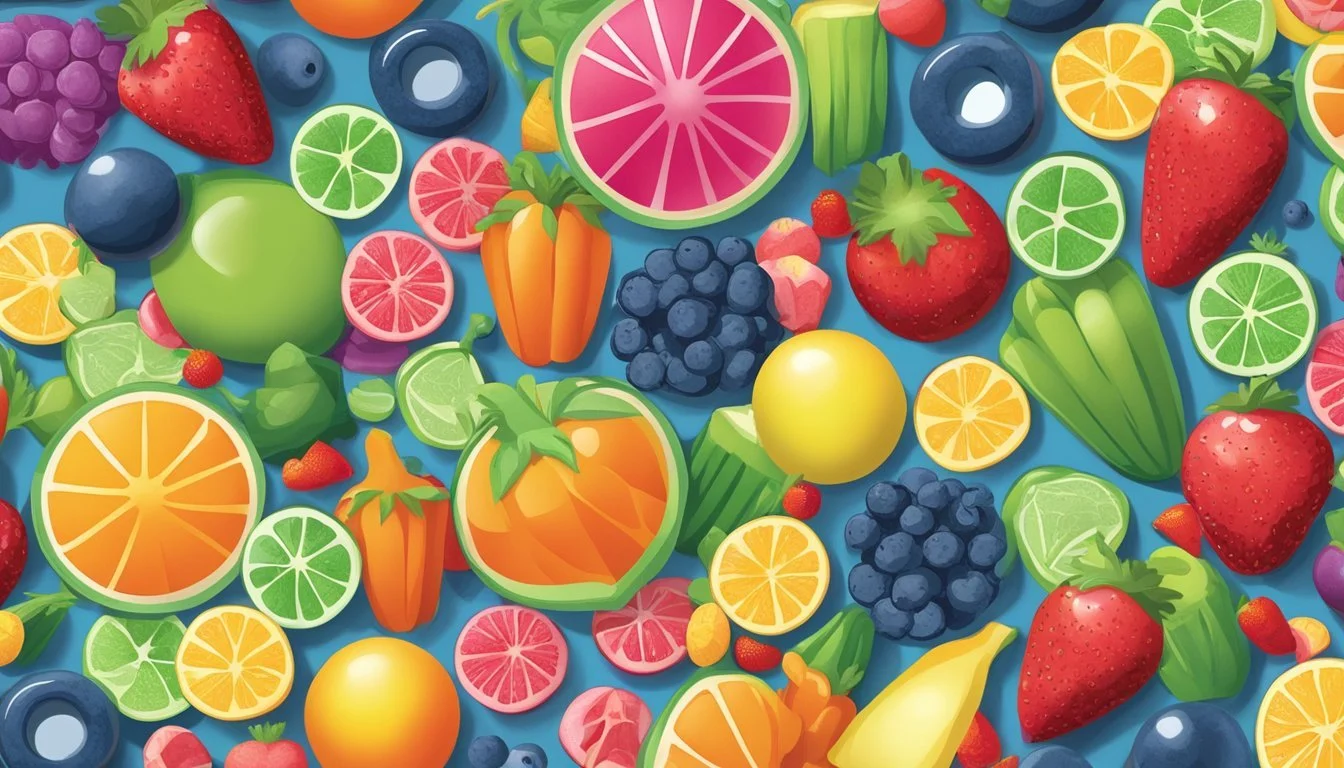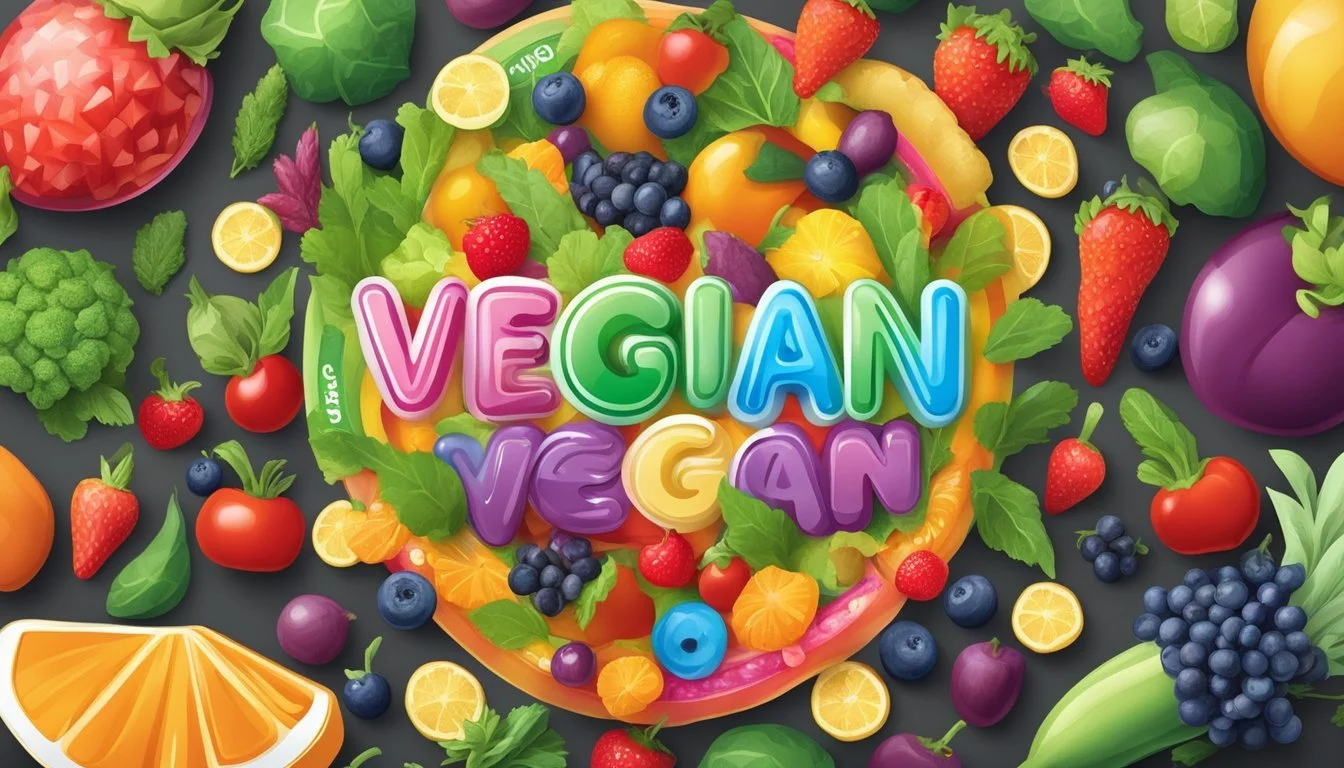Are Ring Pops Vegan?
Unveiling the Ingredients and Vegan Status
Ring Pops, a popular candy that doubles as a wearable accessory, have become a subject of discussion among those adhering to a vegan lifestyle. Traditional Ring Pops are generally considered to align with vegan principles as they do not contain blatant animal-derived ingredients. However, it is essential to note that certain variations, like Ring Pop Gummies, differ due to the inclusion of gelatin—a protein derived from boiling animal parts such as tendons and ligaments, which is not suitable for a vegan diet.
The vegan status of Ring Pops may also come under scrutiny due to the use of sugar. While sugar itself is a plant-derived ingredient, the refining process for cane sugar may involve bone char—charcoal made from animal bones, which is used to achieve a pure white color. This process is especially prevalent in the United States, though not all sugar is refined in this manner. Consequently, some vegans may choose to avoid products like Ring Pops that potentially contain bone-char bleached sugar.
In addition to sugar, other ingredients in Ring Pops such as natural flavors and artificial coloring agents can also be contentious among vegans. These ingredients are not always clearly sourced, hence their categorization as 'gray area' ingredients. These gray areas contribute to the complexity of determining the vegan status of Ring Pops, leading some vegans to be cautious and seek alternative products that are clearly labeled vegan.
What Are Ring Pops?
Ring Pops are distinctive lollipops crafted into the shape of a jewel and mounted on a plastic ring. This confection combines an edible treat with a playful accessory, charming children and those with a nostalgic fondness for unique candies from the past.
History and Brand
The American company Topps introduced Ring Pops in the late 1970s. These candies swiftly rose to popularity, not only as sweet treats but also as collectibles and playful fashion statements among children. The Topps Company, renowned for trading cards and novelty confections, successfully established Ring Pops as a well-known brand across generations.
Design and Appeal
Ring Pops stand out due to their wearable design. Each candy is affixed to a plastic ring base, enabling it to be worn on a finger like a piece of jewelry. This ingenuity appeals to the imaginative play of children, who enjoy the duality of a treat they can eat and a "gem" they can flaunt. The broad range of flavors further enhances the appeal, making Ring Pops a continued favorite in the candy aisle.
Ingredients in Ring Pops
Ring Pops are a popular candy known for their gem-shaped design on a ring, offering a wearable and enjoyable treat. This section provides an in-depth look at the ingredients that make up this vibrant confection.
Main Ingredients
The core components of Ring Pops include:
Sugar: A sweetener that is the primary ingredient.
Corn Syrup: A sweetener derived from cornstarch.
Lactic Acid: An acidulant that provides a tangy taste.
Sodium Lactate: A sodium salt of lactic acid used for flavor and as a preservative.
Artificial Additives
Ring Pops also contain a variety of artificial additives to enhance their flavor and appearance:
Artificial Flavors: Synthetic compounds used to mimic natural flavors.
Artificial Colors: Synthetic dyes used to give the candies their signature bright colors, which may include colors like Blue 1 or Red 40.
Potential Non-Vegan Ingredients
While classic Ring Pops don't include overtly animal-derived ingredients, the spectrum of natural and artificial components can present gray areas for vegans:
Sugar: Some vegans avoid sugar that is processed with bone char, although not all sugar is processed this way.
Natural Flavors: These can sometimes derive from animal sources, although it varies by flavor and brand.
Artificial Additives: While mostly synthetic, vegans might scrutinize sources or testing methods associated with these substances.
Are Ring Pops Vegan-Friendly?
Ring Pops are a popular candy known for their gem-shaped design on a ring-like plastic base. Questions surrounding their vegan-friendliness focus primarily on ingredients and processing methods.
Animal-Derived Components
Traditional Ring Pops are generally devoid of obvious animal-derived ingredients such as dairy, gelatin, beeswax, and carmine which are commonly found in other candies. These ingredients are direct products of animals, with gelatin being a protein obtained by boiling animal parts like bones, tendons, and ligaments. Gelatin is particularly present in Ring Pop Gummies, categorically making them non-vegan.
Controversial Ingredients for Vegans
The vegan status of Ring Pops is often debated due to certain controversial ingredients. Some vegans might avoid Ring Pops due to the presence of sugar, which is sometimes refined using bone char—charred animal bones. This process does not align with strict veganism that opposes all forms of animal exploitation and products. Additionally, natural flavors and artificial coloring agents present in Ring Pops might be contentious due to potential animal testing or undisclosed animal-derived sources, making some vegans cautious of consuming them.
For dietary vegans, who avoid animal products solely for health reasons, Ring Pops may be acceptable, as they don’t contain meat, lactose, or other direct animal products. However, ethical vegans, concerned with animal rights and environmental factors, may exclude Ring Pops from their diet due to the ambiguous nature of some ingredients and their processing.
Ring Pops highlight the complexities within vegan choices, where individual thresholds for what is considered vegan-friendly may vary.
Vegan Concerns and Alternatives
When considering whether Ring Pops are suitable for vegans, it's essential to examine the ingredients and manufacturing processes involved. This section breaks down common concerns within the vegan community about these products and presents alternative options.
Common Vegan Concerns
Ingredients: A primary concern for vegans is whether the ingredients are of animal origin. In traditional Ring Pops, sugar, corn syrup, lactic acid, natural and artificial flavors, fruit juice concentrate, and artificial food dyes are typically used. Although these are generally vegan-friendly, the source of sugar could be questionable. Refined sugar is sometimes processed with bone char, a non-vegan substance, although not all companies use this method. Vegans should also be aware of Red 4 dye, which is animal-derived, although it has not been specifically mentioned in association with Ring Pops.
Gelatin: Ring Pop Gummies are a variant that is not vegan-friendly due to the presence of gelatin, a protein derived from boiling animal parts. This eliminates Ring Pop Gummies from a vegan diet.
Dyes and Colors: The dyes used in Ring Pops, such as Red 3, are of concern not only for their vegan status — as some dyes can be animal-derived — but also for health reasons, as some dyes may be considered unsafe.
Vegan Alternatives to Ring Pops
For those seeking vegan alternatives to Ring Pops, several companies offer fruit-flavored lollipops free from animal-based ingredients and questionable dyes. YumEarth is one such brand that produces lollipops with organic cane sugar and natural fruit flavors, offering a plant-based option.
Fermentation and plant-based sources are used in manufacturing flavors and colors for these alternatives, ensuring they align with a vegan lifestyle. GoOrganic, another company, focuses on using organic ingredients like organic brown sugar, molasses, and beet sugar, which are not refined with bone char.
To purchase vegan lollipops, shoppers can find them on platforms like Amazon and in stores carrying natural products. Organizations like PETA provide lists of vegan confectioneries to guide consumers in making vegan-friendly choices.
Color Additives in Ring Pops
Color additives play a significant role in the appeal of Ring Pops. This section reviews the types of coloring agents used and their sources.
Natural vs Artificial Colors
Ring Pops incorporate both natural and artificial color additives to create their vibrant appearance. Natural colors may come from fruit juice concentrates, including pear juice concentrate used in some flavors, which provide subtle hues to the candy. In contrast, artificial colors, also known as synthetic dyes, are manufactured from various sources. Unlike some natural colors, artificial dyes are not derived from animal products, making them suitable for a vegan diet.
Specific Dyes and Their Origins
Red 40, also known as Allura Red: This is a synthetic dye derived from petroleum. A common artificial color used in food products.
Red 40 Lake: A variation of Red 40 used in food coloring.
Blue 1: Another artificial dye, also petroleum-based.
Blue 1 Lake: A lake pigment version of Blue 1.
Yellow 5 (Tartrazine): This artificial dye is also from petrochemical sources and is widely used in the food industry.
Yellow 5 Lake: The lake pigment form of Yellow 5.
Yellow 6: A synthetic dye made from petroleum.
Red 3 (Erythrosine): A food dye synthesized using chemical methods.
Titanium Dioxide: Used for its white pigment and is a natural mineral, although it is often processed for use in food items.
Ring Pops do not use carmine, which is a dye made from the carminic acid found in cochineal insects and is therefore not vegan. For gluten-sensitive individuals, these color additives are considered gluten-free, as they do not contain any wheat, barley, rye, or crossbreeds of these grains.
Nutritional Profile of Ring Pops
Ring Pops, a popular candy, consist primarily of sugar and corn syrup, contributing to their high caloric content and sweet taste. This section explores the specific nutritional components, focusing on calories and sweeteners.
Caloric Content
The caloric content of a standard Ring Pop is relatively high due to its sugar-based composition. Each Ring Pop typically contains approximately 60 to 70 calories. These calories mainly come from carbohydrates in the form of sugars, providing a quick energy source.
Sugar and Artificial Sweeteners
Ring Pops are known for their sweetness, which is primarily derived from two ingredients:
Sugar: It's the main ingredient in Ring Pops, contributing to the overall taste and texture of the candy.
Corn Syrup: A form of fructose, corn syrup acts as a secondary sweetener and also lends a glossy appearance to the candy.
While Ring Pops do not employ artificial sweeteners, the use of sugar and corn syrup makes them a candy with a high sugar content. Each Ring Pop contains a considerable amount of sugar, sometimes exceeding 10 grams per serving. Consumers should be aware of this when considering dietary restrictions and sugar intake.
Ring Pops and Allergies
When considering Ring Pops in the context of allergies, it is important to examine both the ingredients used and the manufacturing environment. Certain allergens may be present, which are significant for consumers with sensitivities.
Common Allergens in Candy
Ring Pops are generally free of animal-derived ingredients such as gelatin, which is often an allergen concern for those avoiding animal products. However, consumers with other dietary restrictions should be aware that while Ring Pops do not contain dairy or nuts, individuals with gluten sensitivities may still need to verify the gluten-free status of the candy, as it might not be explicitly labeled as such.
Facility Cross-Contamination
Cross-contamination in the facility where Ring Pops are manufactured can be a concern for individuals with severe allergies. Although Ring Pops may not contain common allergens in their ingredients list, the production lines may handle other products that do. Manufacturers typically follow stringent cleaning protocols to minimize the risk, but traces of allergens like nuts or gluten might be present in the candy through accidental cross-contamination. It is advisable for consumers with allergies to consult the package labeling or contact the manufacturer directly for the most accurate information regarding potential cross-contamination risks.
Ring Pop Flavors and Varieties
Ring Pops are known for their vibrant array of fruit-flavored lollipops. Each variety is tailored to offer a unique taste experience, from classic offerings to limited edition treats.
Classic Flavors
The classic range of Ring Pop flavors has been a staple in their lineup, featuring popular choices that have stood the test of time. Consumers can find the following flavors widely available:
Strawberry: A sweet and fruity option that mimics the taste of fresh strawberries.
Watermelon: Imitating the refreshing quality of watermelon, this flavor is a summertime favorite.
Berry Blast: A combination of various berry flavors, Berry Blast provides a tangy and robust taste.
Cherry: Known for its bold and slightly tart profile, the cherry flavor is an iconic choice.
Blue Raspberry: Offers a sweet yet sharp flavor, reminiscent of ripe raspberries with a blue twist.
Citrus Craze: A zesty and tart flavor that captures the essence of citrus fruits.
Limited Edition and Seasonal Varieties
In addition to the classic flavors, Ring Pops occasionally introduces limited edition and seasonal varieties. These special flavors often coincide with holidays or events and are available for a short time. Examples have included:
Twisted Berry Blast: A twist on the classic Berry Blast, combining two berry flavors for a layered taste experience.
Seasonal Varieties: Ring Pops sometimes offers flavors that align with specific seasons or celebrations, such as pumpkin flavor for fall or peppermint for winter.
The brand continually experiments with new combinations and themes to keep their offerings exciting and fresh for Ring Pop enthusiasts.
Environmental and Ethical Considerations
When evaluating whether Ring Pops are vegan, one must consider both the environmental footprint from production and packaging and the welfare of animals affected by policies and ingredient sourcing.
Production and Packaging
Topps, the manufacturer of Ring Pops, relies on processes that involve raw materials such as coal tar and petroleum derivatives for dye production. The use of erythrosine (Red 3) as a colorant is an example. This colorant is synthesized from coal tar, a non-renewable resource with a significant environmental impact due to its extraction and processing. It is also linked to broader industrial activities contributing to pollution.
Ring Pops' packaging is primarily plastic, which may be sourced from petroleum products. The environmental concerns surrounding plastic include its longevity in the environment and the impacts from its production. The move towards more eco-friendly packaging options is growing, yet it's unclear if Topps has made substantial changes in this area.
Animal Welfare and Policies
The production of Ring Pops may intersect with concerns over animal welfare. While no direct animal-derived ingredients are found in most Ring Pop varieties, the broader ethical considerations involve several factors, such as animal testing and fermentation processes. The lactic acid used in Ring Pops is typically derived through a fermentation process. While this process is generally free from direct animal products, the ethical considerations become complex when one accounts for potential animal testing of product components. Certain animal testing protocols can involve a variety of species, such as mice, rats, and even larger animals like dogs, which raises concerns from animal welfare organizations like PETA.
Moreover, the broader implications of sugar production should be considered. Although not directly an ingredient issue, the potential use of bone char in refining sugar could make the final product non-vegan by strict standards. This reflects on the company's policies and practices toward ethical sourcing and animal welfare considerations in their supply chain.
Final Thoughts on Ring Pops
When considering the vegan status of Ring Pops, one can confidently state that the original hard candy versions adhere to vegan principles. They do not contain gelatin, carmine, or beeswax, which are common non-vegan ingredients found in similar products. It's noteworthy, however, that the gummy variations are not vegan due to the inclusion of gelatin, an animal-derived product.
For those concerned about indirect animal exploitation, the presence of added sugar might be a cause for pause. Some sugar is processed with bone char, although determining whether this method is utilized for Ring Pops may require further investigation from ethical vegans.
It's essential to keep in mind:
Original Ring Pops: Vegan-friendly.
Ring Pop Gummies: Contain gelatin, non-vegan.
Argument of vegan status may hinge on sugar sources.
When making informed choices, consumers should consider that Ring Pops also contain artificial flavors and colors, which, while not directly non-vegan, might not align with a whole-food plant-based diet. Individuals seeking healthier alternatives should look for treats with less sugar and more natural ingredients.
In summary, consumers seeking vegan confectionery can opt for the traditional Ring Pops with greater assurance, while steering clear of their gummy counterparts.












